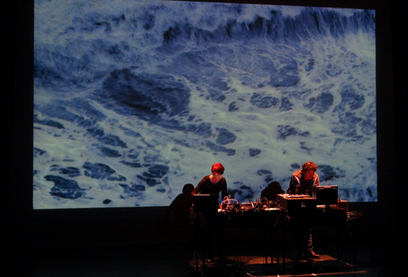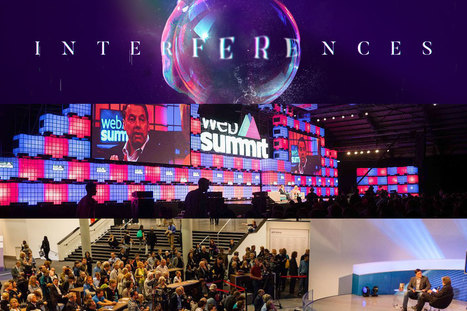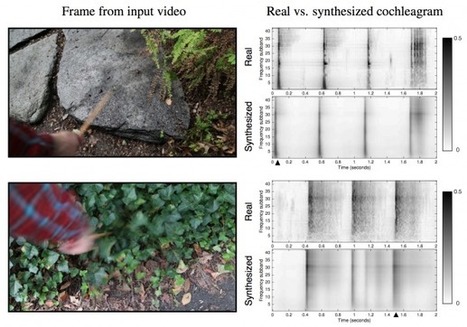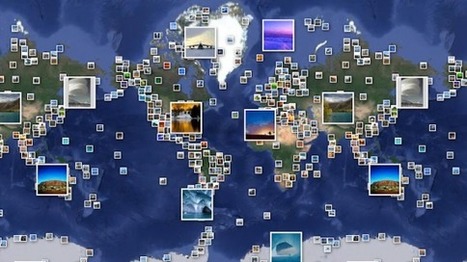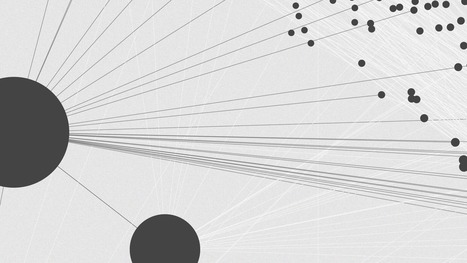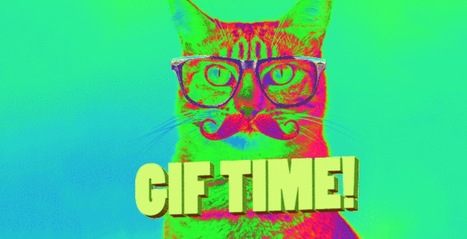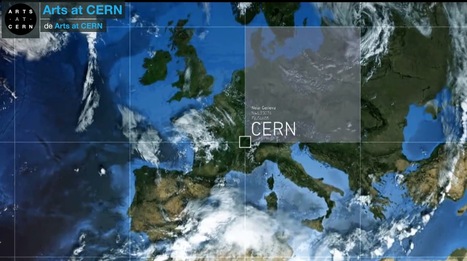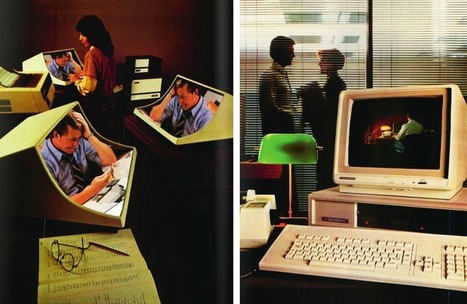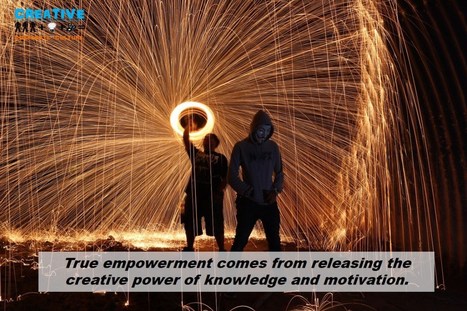 Your new post is loading...
 Your new post is loading...

|
Scooped by
Jacques Urbanska
November 23, 2016 3:45 AM
|
With her buttoned-up style, work with the UN, and name like a plucky character in a certain English wizard series, Delia Derbyshire may not seem a likely pioneer of experimental electronic music. But her work in the sixties and seventies indeed made her a forerunner of so much contemporary electronic music that most every current legend in the business—from Aphex Twin and the Chemical Brothers to Paul Hartnoll of Orbital, who calls her work “quite amazing” and “timeless”—credits her in some way or another. If you’ve never heard of Derbyshire, you can learn about her life and work in the 2010 BBC Radio 4 documentary above, “Sculptress of Sound.” ...

|
Scooped by
Jacques Urbanska
November 22, 2016 6:23 AM
|
This text has been written for the proceedings of the international conference "New Perspectives, New Technologies", organized by the Doctoral School Ca' Foscari - IUAV in Arts History and held in Venice and Pordenone, Italy in October 2011 In the late nineties and during the first decade of this century the term “new media art” became the established label for that broad range of artistic practices that includes works that are created, or in some way deal with, new media technologies. Providing a more detailed definition here would inevitably mean addressing topics beyond the scope of this paper, that I discussed extensively in my book Media, New Media, Postmedia (Quaranta 2010). By way of introduction to the issues discussed in this paper, we can summarize the main argument put forward in the book: that this label, and the practices it applies to, developed mostly in an enclosed social context, sometimes called the “new media art niche”, but that would be better described as an art world in its own right, with its own institutions, professionals, discussion platforms, audience, and economic model, and its own idea of what art is and should be; and that only in recent years has the practice managed to break out of this world, and get presented on the wider platform of contemporary art. ...

|
Scooped by
Jacques Urbanska
November 21, 2016 3:13 PM
|
Since its opening in 2013, the Brooklyn TRANSFER Gallery has remained dedicated to representing computer-based practices by producing solo exhibitions and presentations, experimenting with the artists "de-screening" mediated artworks to create considered physical installations. We speak to the Founder/Director of the unique space, Kelani Nichole, about her own collection of contemporary art and how some of the world's biggest collectors are welcoming new formats into their private collections. IC: Tell us about your collection. How did your passion for collecting digital art come about? Kelani Nichole: The collection grew out of my activities at TRANSFER, an experimental exhibition space I founded in 2013 in Brooklyn, NY to support emerging media formats. At the time, I was quite new to the art market and the world of collecting... http://kelaninichole.com http://transfergallery.com

|
Scooped by
Jacques Urbanska
November 21, 2016 6:17 AM
|
Le neural.net est laplacien parce qu’il prévoit en calculant la possibilité d’une récurrence (Nitish Srivastava, Elman Mansimov, Ruslan Salakhutdinov, 16 feb 2015). En ce sens, il apparaît contradictoire avec l’hyperchaos et la contingence. En se fondant sur des grands ensembles de données (les datasets) accumulés sur les réseaux sociaux, le RNN déduit ce qui va pouvoir être. Il vectorise pour se faire des documents qui en tant qu’inscription sont passés. Cette vectorisation permet d’éviter de manipuler des symboles sémantiques et se limite donc aux mathématiques. La contingence n’a pas lieu d’être avec le RNN parce qu’elle n’a jamais eu lieu. Elle n’est pas d’autres lois, elle est hors-la-loi, sans loi.

|
Scooped by
Jacques Urbanska
November 20, 2016 10:11 AM
|
Think art. What comes to mind? Maybe Picasso, Rodin, Dali. Now think technology - and you'll probably imagine a smartphone or a computer.Throughout history, technology has provided artists with new tools for expression. Today, these two seemingly distinct disciplines are interlinked more than ever, with technology being a fundamental force in the development and evolution of art. All over the world, people are engineering our future. The internet, digital fabrication, nanotech, biotech, self-modification, augmented reality, virtual reality, "the singularity" - you name it, all of this is altering our lives and our view of the world and ourselves...

|
Scooped by
Jacques Urbanska
November 19, 2016 12:35 PM
|
A Webwatch by Julien Deswaef, a designer and versatile artist. Active both in visual art as well as in coding, he has the ability to transform "plastic ideas" into digital realities. He regularly collaborates with artists in the world of entertainment, music, plastic and digital arts. Engaged in Open Source and Free Softwares as an ethical principle, Julien relevantly provides the connection between the visual arts, the world of contemporary images and the most advanced aspects in digital research...
http://xuv.be

|
Scooped by
Jacques Urbanska
November 9, 2016 6:23 AM
|
Everything sound: physics, tech, art, history, culture, education,games, ecology, events—from Fourier transforms to installation art. Submissions welcome!

|
Scooped by
Jacques Urbanska
October 26, 2016 3:56 PM
|

|
Scooped by
Jacques Urbanska
October 22, 2016 12:15 PM
|
Ce qu’il y a de bien avec Accès)s(, c’est que chaque année, le festival nouveaux médias de Pau parvient à se renouveler tout en poursuivant son exploration des territoires technologiques et ses bordures. Sans doute cela tient-il à son exceptionnelle ouverture : chaque édition est construite par un (ou deux) commissaires invités, le plus souvent artistes. Après « Vu du ciel » en 2015 (invitée : Agnès de Cayeux), « Disnovation » en 2014 (invités Bertrand Grimault et Nicolas Maigret), l’édition 2016 a pour thématique « Frontières et projections », sur proposition des commissaires artistes Hortense Gautier et Philippe Boisnard, connus sous le nom d’HP Process. Crise migratoire, perte des repères géographiques et mentaux qui faisaient le ciment de nos sociétés… Sur cette crête d’actualité douloureuse, Accès)s( surfe jusqu’en décembre pour proposer un ensemble chaotique, exigeant et parfois labyrinthique, prenant l’idée de la carte et des frontières comme un « espace de possibles, générant de nouvelles façons d’être au monde, grâce à des artistes et chercheurs qui travaillent à l’intersection de l’art numérique, des arts visuels et sonores, de la poésie, de la géographie, du documentaire et de la prospective »...

|
Scooped by
Jacques Urbanska
October 20, 2016 3:47 AM
|
KIKK, WebSummit, NEM : en novembre, faites la tournée des festivals tech européens avec Cap Digital ! Acteur clef du rayonnement de l’innovation francilienne et organisateur du rendez-vous incontournable de l’innovation numérique Futur en Seine, Cap Digital invite ses entreprises adhérentes à s’exporter à l’international le temps d’un mois riche en événements. Plongée au coeur du design et de la création au KIKK Festival, immersion business à la rencontre des plus grands entrepreneurs au Web Summit ou découverte des dernières mutations de l’industrie des médias au NEM Summit, faites votre choix ! Cap Digital vous accompagne pour profiter au mieux de votre voyage et faire de ce déplacement une étape décisive pour le développement de votre activité.
...

|
Scooped by
Jacques Urbanska
October 16, 2016 5:40 PM
|
For robots to navigate the world, they need to be able to make reasonable assumptions about their surroundings and what might happen during a sequence of events. One way that humans come to learn these things is through sound. For infants, poking and prodding objects is not just fun; some studies suggest that it’s actually how they develop an intuitive theory of physics. Could it be that we can get machines to learn the same way? Researchers from MIT’s Computer Science and Artificial Intelligence Laboratory (CSAIL) have demonstrated an algorithm that has effectively learned how to predict sound: When shown a silent video clip of an object being hit, the algorithm can produce a sound for the hit that is realistic enough to fool human viewers...

|
Scooped by
Jacques Urbanska
October 16, 2016 5:30 PM
|
Your guide to navigating eyewitness media, from discovery to verification

|
Scooped by
Jacques Urbanska
October 13, 2016 11:51 AM
|
In January 2011, protests broke out across Egypt to demand an end to the despotic and repressive regime of Hosni Mubarak. The protests were largely organized online, through social networks like Twitter and Facebook. Mubarak quickly realized this, and launched a counterattack: He severed all access to the internet from within Egypt. Dyn Research, a internet performance company that analyzes how the internet performs, noted that Egypt’s Arab Spring shutdown started with just a couple phone calls from the government: The prior day [before the internet shutdown], we had received a tip from an Egyptian telecom engineer that the government was warning some telecoms that they should be prepared to act quickly if the government ordered the shutdown of internet services. Just after midnight local time in Egypt, that order came and nearly all Egyptian access to the global internet was down in a matter of minutes...
|

|
Scooped by
Jacques Urbanska
November 22, 2016 3:03 PM
|
IOhannes M Zmölnig is an active member of the Pure Data development scene. So it’s of little surprise that he was attending the Pure Data Conference that just happened last week in NYC. The conference brought a panel of enthusiasts from all over the world to discuss the development and future of the software. I was especially pleased to hear Mark Edward Grimm‘s experience teaching Pure Data as a multimedia creation tool to some college students here in the US. (See Mark Edward Grimm’s website for more info.)

|
Scooped by
Jacques Urbanska
November 22, 2016 4:13 AM
|
For the past decade, along with fellow former members of the late hacker-net artist collective Free Art & Technology (FAT) Lab, American artist Evan Roth has been “dedicated to enriching the public domain one mutha-fuckin LOL at a time,” as the collective writes in their mission statement. Roth’s net art stunts have includedamassing a GIF army to Occupy the Internet; hacking his internet cache to create digital “self-portraits;” fooling the Google algorithm into making his name the number one search result for “bad ass mother fucker,” and creating a browser plug-in that erases Justin Bieber from the internet. But in recent years, especially in the wake of the NSA spying scandal, Roth has found himself disillusioned with the “monetization, commercialization, and centralization of the internet,” as he tells Hyperallergic....

|
Scooped by
Jacques Urbanska
November 21, 2016 7:28 AM
|
How one humble file type ruled the internet for decades. November 5, 1999, was Burn All GIFs Day. Had you visited its homepage that Friday, you would have seen the movement's game plan laid out as plainly as its name: "On Burn All GIFs Day, all GIF users will gather at Unisys and burn all their GIF files." This, alongside a selection of pointedly anti-GIF imagery—all proudly PNG files. Despite the obvious joke of setting files on fire, acknowledged with a winking plea to "extinguish all GIFs before leaving the vicinity," the anger was real and the mission was earnest: to free the web from the scourge of the GIF once and for all. Already more than a decade old and with roots reaching back half a decade before the World Wide Web itself, the GIF was showing its age. It offered support for a paltry 256 colors. Its animation capabilities were easily rivaled by a flipbook. It was markedly inferior to virtually every file format that had followed it. On top of that, there were the threats of litigation from parent companies and patent-holders which had been looming over GIF users for five long years before the fiery call to action. By Burn All GIFs Day, the GIF was wobbling on the precipice of destruction. Those who knew enough to care deeply about file formats and the future of the web were marching on the gates, armed with PNGs of torches and pitchforks. And yet, somehow, here we are. Seventeen years later, the GIF not only isn't dead. It rules the web.

|
Scooped by
Jacques Urbanska
November 21, 2016 4:43 AM
|
Since it’s inception African Digital Art has presented unparalleled ideas, individualistic works and insightful designer solutions by the African creative. African Digital Art has become a platform for innovation and inspiration with a sophisticated blend of fresh talent and successful designers and artists. Pushing Digital Boundaries has become the tag line that is now fused with African Digital Art’s identity. African Digital Art is a celebration of African culture of art, design and technology. Created and developed by Jepchumba, the platform covers a wide range of artistic production from; audio/visual production, animation, interactive projects, web, film, graphic art and design. Our focus is on artistic work or practice that utilizes digital technology as an essential part of the creative, presentation or distribution process.

|
Scooped by
Jacques Urbanska
November 19, 2016 5:12 PM
|
The University of Washington and Microsoft Research are making big investments in uncategorizable, emerging-media work. What are their artists stumbling upon? Not long ago, during an exclusive reception for donors to the University of Washington's College of Arts & Sciences, a handful of student artists were invited to present their works. When it came time for a piece by Robert Twomey, a PhD candidate in the university's emerging-technology department called DXARTS, one donor responded viciously, openly declaring his art "an abomination." The art was a machine that makes drawings. The donor was a woman trained in painting and printmaking, a die-hard believer in the importance of the hand of the artist. "But there's no one behind it!" she exclaimed.
"But I am behind it," said Twomey. She gave him her name and number and the impression that she'd like to cure him of an affliction. Twomey kept trying to explain that he was a painter at heart, that they were on the same side...

|
Scooped by
Jacques Urbanska
November 9, 2016 6:27 AM
|
ARTS AT CERN is announcing today three new open calls, giving artists the chance to conduct research at CERN as part of its COLLIDE and ACCELERATE residencies.
Two new international partners have joined the ACCELERATE programme, a one-month, country-specific residency: the Arts Council Korea (ARKO), from South Korea, and KONTEJNER, bureau of contemporary art praxis from Zagreb, Croatia.
“Science, arts and technology are key disciplines in understanding and shaping today’s culture. CERN is proud to be part of that movement, by collaborating with international institutions to foster interactions between our scientists and artists from around the globe,” said CERN Director for International Relations, Charlotte Warakaulle.
Under the ACCELERATE programme, with the support of ARKO, ARTS AT CERN will invite a South Korean visual artist to come to CERN and learn the scientific approach for understanding our universe. At the same time, with KONTEJNER, CERN will open its doors to a Croatian artist who wishes to, through in-depth exploration of high-energy physics, use the residency to reflect how science affects artistic practice. The two open calls begin today for artists to win a one-month research stay at CERN. Applications for South Korean artists can be submitted up to 31 December 2016, and up to 11 January 2017 for Croatian artists.

|
Scooped by
Jacques Urbanska
November 9, 2016 4:41 AM
|
The importance of net.art will never be adequately addressed while the history of art is written by the museums, galleries and the market. Many artists affiliated with this 1990s art movement deliberately used the Internet to circumvent the machinery of the art world or made works that are difficult if not impossible to exhibit and sell. But net.art still offers an essential critique of our relationship to the Internet as well as a compelling demonstration of how art can challenge it from within. Recognising that the dust has not yet settled, curator and critic Domenico Quaranta composed four short hypotheses about net.art built around the Introduction to net.art (1994–1999) by artists Natalie Bookchin and Alexei Shulgin in 1999.
In a shared online document, four artists and artist groups who helped shape the course of net.art – UBERMORGEN, JODI, Vuk Cosic, and Olia Lialina – respond with their own take on what happened.

|
Scooped by
Jacques Urbanska
October 24, 2016 4:29 PM
|
L'espace virtuel du Jeu de Paume ouvre ses portes à une série d'expositions dématérialisées, coordonnées par l'artiste curateur Nicolas Maigret. Intitulé Futurs Non-Conformes, ce programme mêle art, ethnographie, critique et spéculation à travers 3 cycles (passé, présent, futur). Une occasion pour interroger son curateur autour des thèmes de l'anticipation, de la propagande de l'innovation et de l’archéologie des médias. Nicolas Maigret, Futurs Non-Conformes correspond à une forme que l’on peut appeler le « musée virtuel », pouvez-vous nous présenter ce concept ? Nicolas Maigret : Futurs Non-Conformes est une exposition en ligne, rassemblant une série de liens contextualisés autour de pratiques artistiques et techno-critiques. J’ai proposé que l’on articule ce programme autour de trois cycles, avec différents points de vue et différentes approches, qui chacune viennent décoder, décrypter et révéler les enjeux propres à différentes technologies, tout en développant une forte dimension critique. Nous avons donc écrit les présentations de chacun des projets avec les artistes, pour ensuite offrir un accès direct,via des liens hypertextes, aux expositions en ligne qui peuvent être aussi bien des collections d’objets (photos), que des éditions de magazines ou d’articles, des documentaires, etc...

|
Scooped by
Jacques Urbanska
October 21, 2016 12:46 PM
|
Today I’m announcing a $100M commitment to Kernel in an effort to enhance human intelligence and reimagine our future. Unlocking our brain is the most significant and consequential opportunity in history — and it’s time sensitive. We’re starting to identify the mechanisms underlying neural code and make them programmable. Our biology and genetics have become increasingly programmable; our neural code is next in line. Programming our neural code will enable us to author ourselves and our existence in ways that were previously unimaginable I started Kernel in 2016 (read more at the Washington Post) to build the world’s first neural prosthetic for human intelligence enhancement. The investment I’m making in Kernel today will expedite the development of this prosthetic and similarly transformative neurotechnologies. Why now?
...

|
Scooped by
Jacques Urbanska
October 18, 2016 8:49 AM
|
Louis Eveillard : I’ve been working with Pauline Gourlet on this project for a few months now, and it’s finally nearing the end. This post is a short account of how this idea came to be, from the first rough circuits to silkscreen-printing the fabric and finally connecting and programming with arduino. Another post, one that is focused on actually using this display and exploring it’s potential in real-world situations with users is coming later. Slowscreen is a black capacitive fabric screen, reactive to the skin temperature. Embedded in the home — furnitures, walls, pillows or curtains — these sensitive areas become expression spaces between housemates. Temperature becomes a language for interaction, as a witness of each other past presence. The ephemeral imprint evokes Rorschach inkblots, open to interpretations. This calm technology aims to integrate the usual complexity of information in the texture of everyday life...

|
Scooped by
Jacques Urbanska
October 16, 2016 5:35 PM
|
Nils Aziosmanoff est président du Cube, Centre de création numérique à Issy-les-Moulineaux. Depuis sa création en 2001, le Cube s’est donné pour mission à la fois de s’engager auprès des artistes défricheurs de nouvelles formes d’expression (le Prix Cube en a été le témoin encore cette année) et de donner des pistes d'appropriation de la pratique numérique créative à destination d'un public toujours plus large.
Dans le cadre de notre dossier « Tous Créateurs ? », nous avons recueilli son point de vue sur l’évolution des pratiques amateurs. Interview...

|
Scooped by
Jacques Urbanska
October 13, 2016 12:36 PM
|
In recent years, cyber attackers have adopted a new, more surreptitious operational mandate; one that employs a set of strategies and technologies that dramatically complicates the detection process. At the forefront of these roguelike tactics: serving up dynamic IP addresses. Dynamic IP addresses are an effective way to defeat IP-based defense systems: launch application-level attacks that originate from real—but dynamic—IP addresses. This paper outlines some of the most common variations of dynamic IP attacks, explores challenges in defending against them, and points to best practices for thwarting these attacks.
|



 Your new post is loading...
Your new post is loading...



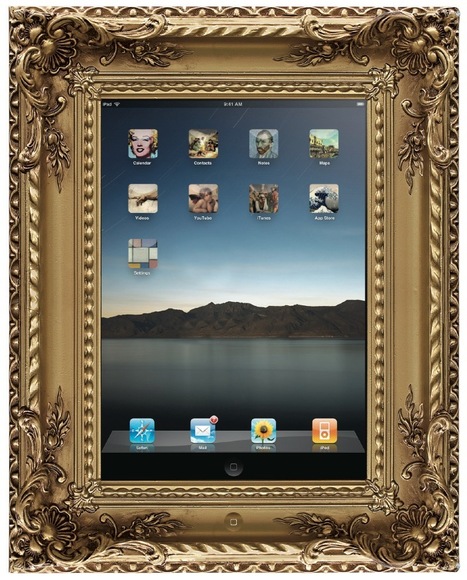
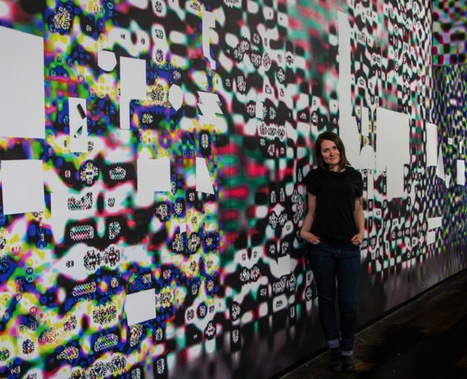
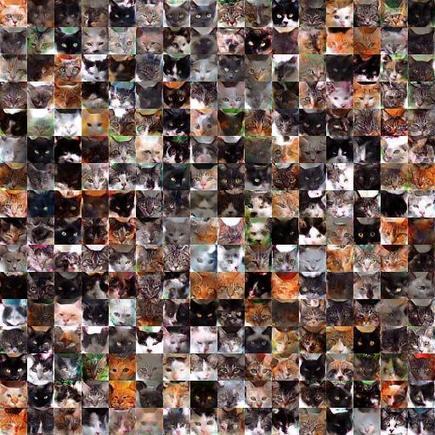



![Soviet or Internet - Cyberneticists in Hell (how [not] to network a nation) | By Baruch Gottlieb - furtherfield.org | Digital #MediaArt(s) Numérique(s) | Scoop.it](https://img.scoop.it/RmiQ0sMgKRWK7d9c1C66cTl72eJkfbmt4t8yenImKBVvK0kTmF0xjctABnaLJIm9)
